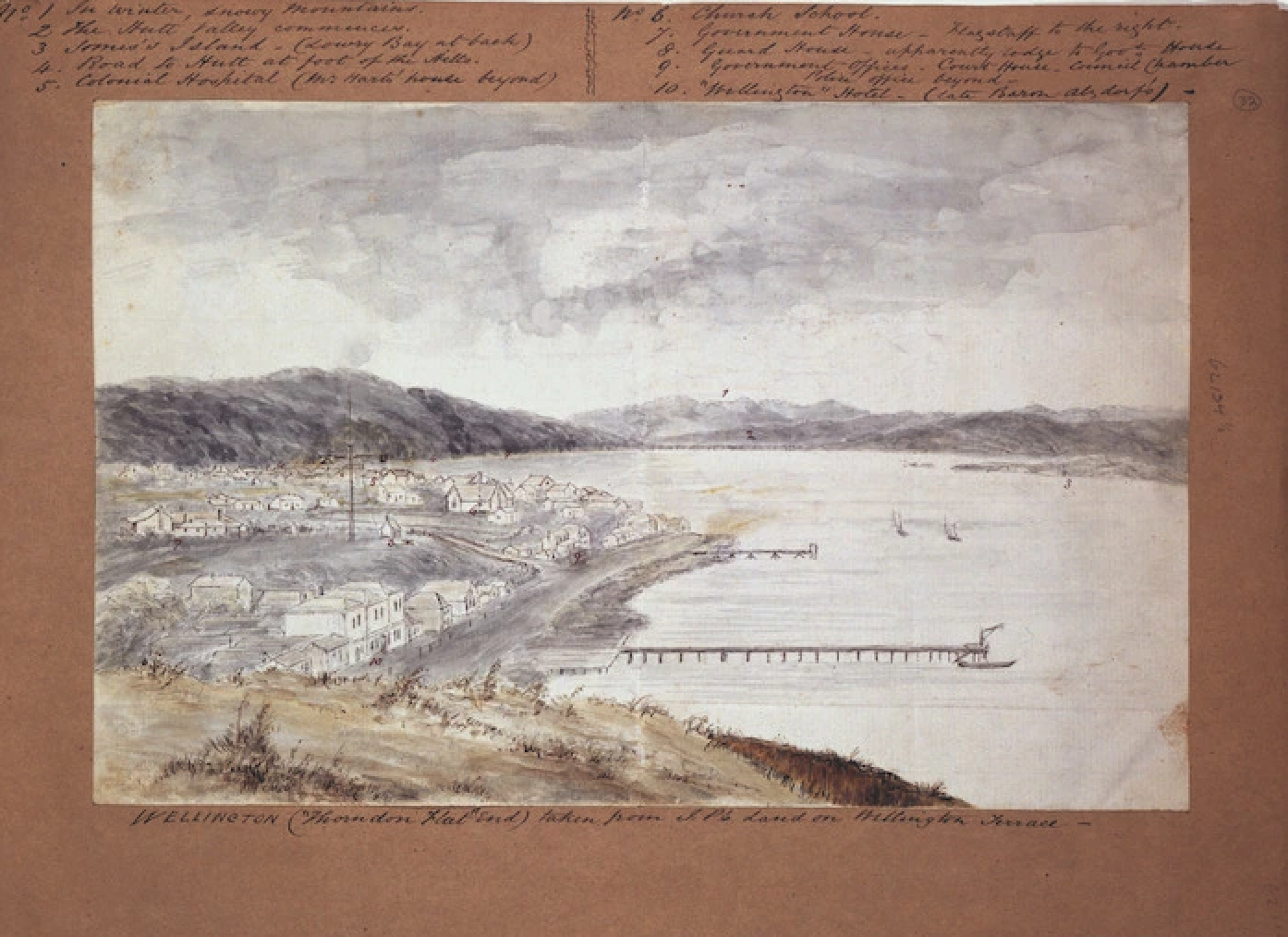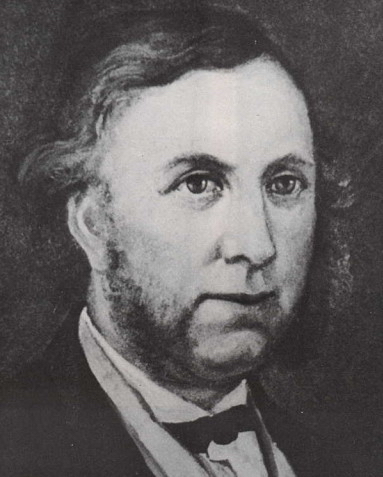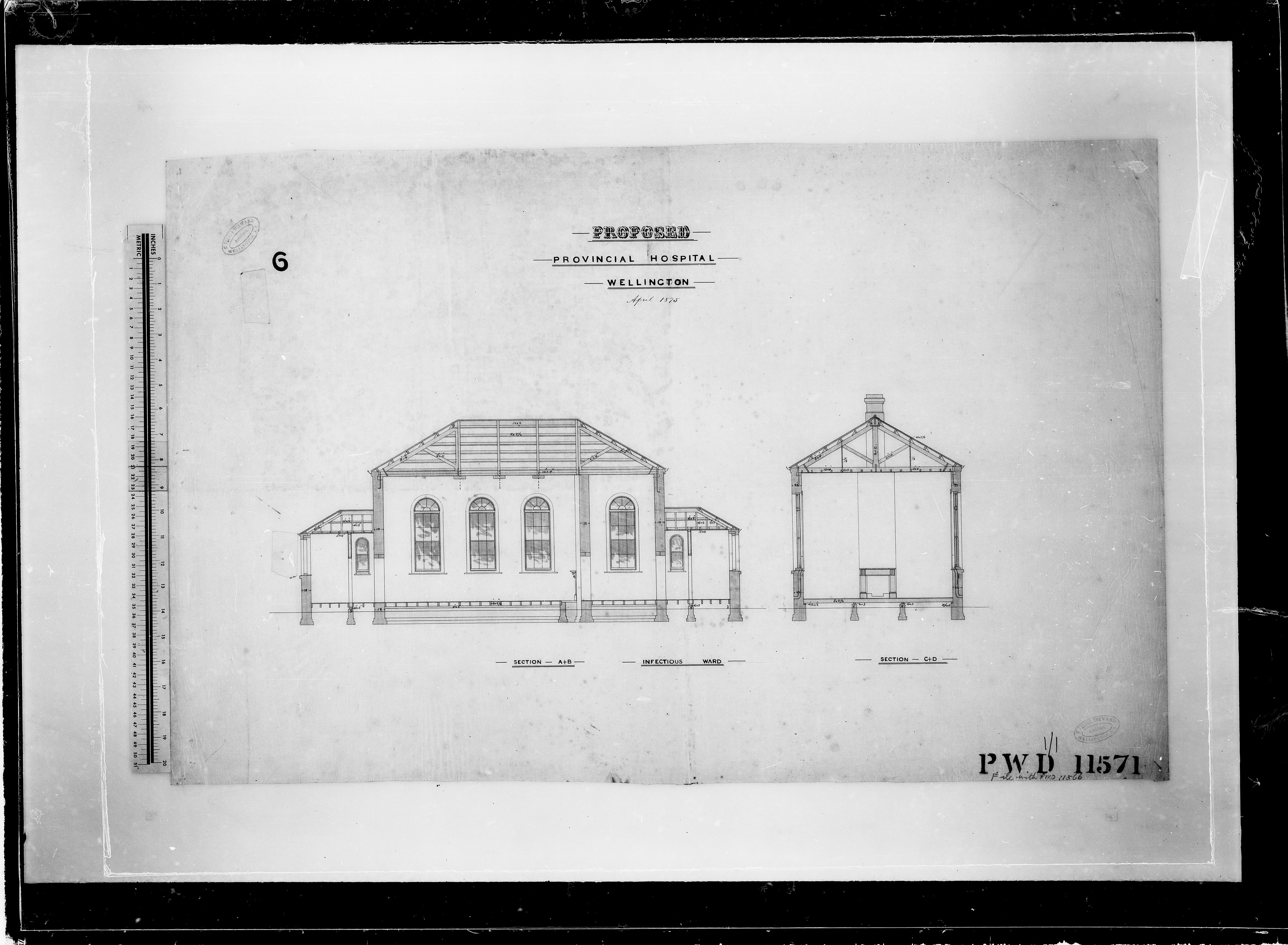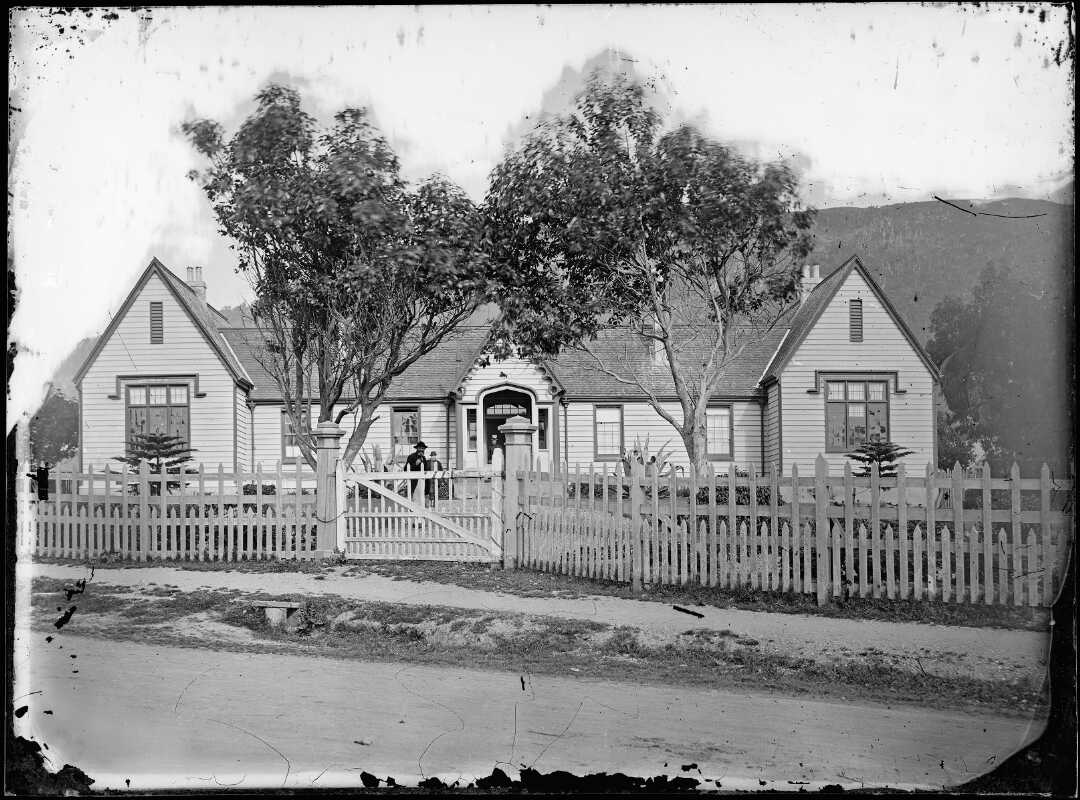The first colonial hospital
Discover the history of Thorndon Hospitals.

The following is part of a significant collection of historic digital content about Wellington Regional Hospital, providing insights into our history of health.
The first Colonial Hospital
In 1845, the colony’s governor, George Grey commissioned four hospitals, to be located in Wellington, Auckland, New Plymouth and Wanganui. A particular stipulation that he made was that each hospital should provide services to both the settlers and local Māori. Indeed, when plans were drawn up for the hospital in Wellington, it was referred to as the Native Hospital and that title continued through until the end of 1847 when it was replaced by the Colonial Hospital.
The hospital opened in September 1847 and was built on land donated by local Māori, bordered by Pipitea and Mulgrave streets – on the site where present-day Wellington Girls’ College is located. This was the first of the four colonial hospitals to open.
It was a two storey brick and plaster structure. On the ground floor was a large surgery, opposite to which was another room used as a sick ward. Other rooms on the ground floor were offices. On the first floor was a large ward running the length of the building, capable of housing eight to ten patients. It was planned to add two extra wings in due course to accommodate more patients.
There were steam and shower baths. Each patient was taken straight to the bath rooms on admission and if not too ill was subject to a steam bath by the hospital attendants.
Caption for top image: From a sketch by L E Ward. Wellington Hospital Archives, as gathered by Ron Easthope, honorary archivist. Further image details unknown; reproduced with permission from Health New Zealand | Te Whatu Ora.
The medical officer in charge of the hospital was Dr John Patrick Fitzgerald. He had been appointed Colonial Surgeon by the colony’s first Governor, Hobson.
Fitzgerald had arrived in Wellington in 1840. He was popular with local Māori and he made a point of learning Te Reo Māori. Dr Fitzgerald lived nearby the hospital in Thorndon and was assisted by two resident hospital attendants, husband and wife John and Sarah Jacobs. They acted as cleaners and cooks, nurses and dressers, working very long hours for very little pay. By 1849 Mrs Jacobs came to be known as ‘the Matron’.

On 16 October 1848 Wellington experienced a severe earthquake resulting in significant damage to the hospital.
Patients were evacuated to Government House.
A ‘temporary’ hospital was set up in a newly completed building that had been intended as a hotel.
There were steam and shower baths. Each patient was taken straight to the bathrooms on admission and if not too ill was subject to a steam bath by the hospital attendants.





